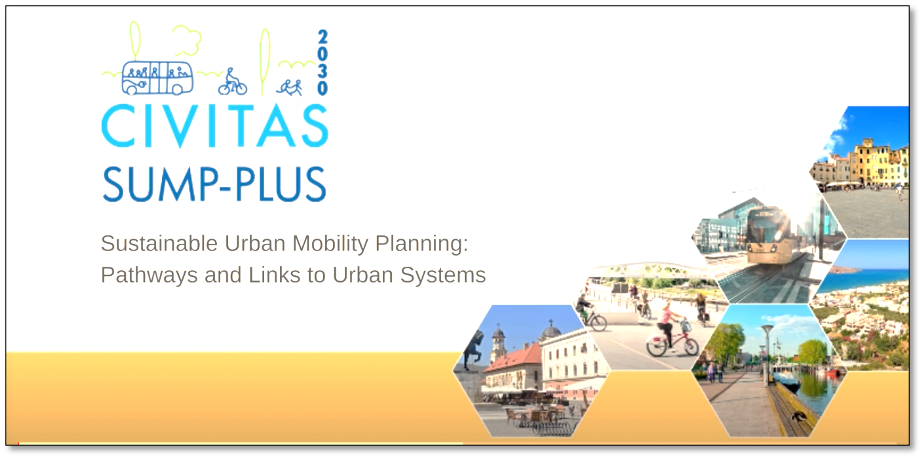Topic outline
STRUCTURE OF THE E-COURSE

This course will provide lessons on particular aspects of transition pathway development focussing on the key elements: policy mix selection; establishing cross sector links; overcoming governance challenges; facilitating stakeholder engagement.
The lessons are designed to provide participants with the most information and involvement possible. Don't assume that just because you read the lessons, you must complete them all in the same sequence they are written. However, this is our suggestion. Feel free to devote multiple days to one lesson.
Lessons will be followed by related assignments and will be completed using the tools that have been developed in the project. They have been designed as brief tasks to ensure that you fully comprehend and adhere to the content you have learned during the sessions.Resources will be uploaded related to transition pathways in general and to each of the key elements covered by the relevant sub-courses.
A forum will be launched to allow participants to exchange ideas.
Using the posted messages in this forum, you may engage in discussions with your peers. It serves as a forum for discussion, technical knowledge exchange, and city collaboration.
INTRODUCTION TO TRANSITION PATHWAYS

Course 1 “Introduction to Transition Pathways” starts with an introductory webinar held by LUCIANO PANA TRONCA - UCL
The webinar provides a summary of both the main course topic and the several subjects that the pertinent subtopics discuss. The video is complemented by two lessons, one on the development of a city vision, objectives and targets, and a second on identifying successful policy mixes.
Further comprising this introductory section are two assignments related to the lessons, a tool – the Service Delivery Options Tool – for cities interested in improving cross-sector cooperation while also exploring service delivery options that help reduce travel, and a suggestion for further reading.
Constructing a transition pathway requires a vision-led approach to planning. This approach, being developed in SUMP-PLUS, puts EU carbon zero targets at the centre of longer-term SUMP planning, and relies on ‘backcasting’ rather than ‘forecasting’ methods.
 This first lesson will provide you with useful information on the development of a city vision, objectives and targets.
This first lesson will provide you with useful information on the development of a city vision, objectives and targets.
 The second lesson will support you in identifying and choosing the right policy strategy mix to meet long-term visions and carbon targets.
The second lesson will support you in identifying and choosing the right policy strategy mix to meet long-term visions and carbon targets. 
This tool highlights general ways in which public and private sector organisations can provide their goods and services to their customers, at fixed or mobile sites, or to or within homes.

Deliverable 1.2 - Developing Transition Pathways towards Sustainable Mobility in European cities includes a review of the state-of-the-art in academic and practitioner evidence regarding the development of longer-term Transition Pathways for urban mobility, and sets out some key concepts for addressing this issue. It identifies some major implementation barriers to sustainable mobility policies in European cities, and proposes a new planning approach to overcome the ‘implementation gap’ and enable sustainable mobility transitions.

POLICY BRIEF: Planning a long-term zero carbon transition pathway / Author: Luciano Pana Tronca and Prof. Peter Jones, University College London
CROSS-SECTOR LINKS for long-term transition planning

Most travel is not undertaken for its own sake, but is a derived demand and involves people travelling to destinations to take part in various activities, from carrying out employment, to purchasing goods, obtaining a service (e.g. eating out), or for social interaction. The nature of these interactions with other sectors – and whether they are physical or virtual events – depends on the business and service delivery models that those sectors employ.
ACCESS E-COURSEGOVERNANCE CHALLENGES

Formulating long-term policy goals and designing policies and measures that a city needs to transition to sustainable mobility can often lead to the identification of a barrier in the current way local governance functions.
The ability to formulate and deliver the mix of coordinated policy measures at the appropriate times is likely to require reform to many aspects of governance, possibly including organisational structures, institutional capacities, legislation, financial resources and funding frameworks.
ACCESS e-COURSESTAKEHOLDER ENGAGEMENT

Developing a transition pathway is a participative process involving politicians, multi-sector city planners, policy makers, private sector organisations and citizens. Stakeholder engagement in SUMP-PLUS focuses on developing relationships between major actors involved in the mobility sector and other relevant policy areas at the local level, as well as creating a tailored strategy for each city to boost existing collaboration.
ACCESS e-COURSE






